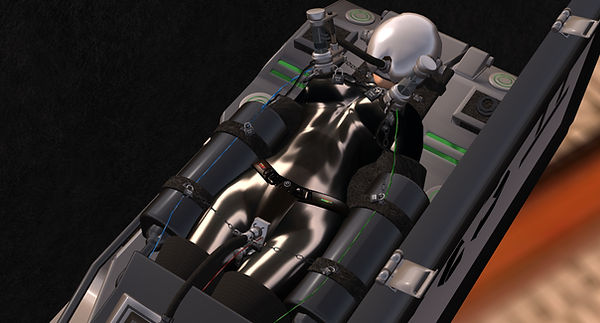Noctorgasm
Research tells us that female sleep orgasm is more common than previously thought. Often, female nocturnal orgasms start around 20 years of age and continue thereafter. Female sleep orgasms are actually more common later in life.

Natural occurence of noctorgasms
Female orgasm generally gets easier with experience and age. Having an orgasm while sleeping isn’t a sign of a sexual disorder or sexual dysfunction. Female nocturnal orgasms don’t reflect a lack of intimacy, and external stimulation isn’t necessary for one to occur. All nocturnal orgasms are caused by mental and physical changes that take place in the body. According to scientific research, around 37% of women will experience nocturnal orgasms by the age of 45, and this rate increases with age. People who have had nocturnal orgasms tend to have them three or four times a year.
Sexual dreaming
A sexually arousing dream during the rapid eye movement (REM) stage of sleep can cause noctorgasms. During REM, blood flow increases in the pelvic region, and the brain is perfectly primed for sleep orgasm.
Many people report awakening to find themselves aroused or still having an orgasm. This is absolutely normal.
Lucid dreams
Lucid dreams are when you know that you’re dreaming while you’re asleep. You’re aware that the events flashing through your brain aren’t really happening. But the dream feels vivid and real. You may even be able to control how the action unfolds, as if you’re directing a movie in your sleep.
Lucid dreams are most common during rapid eye movement (REM) sleep, a period of very deep sleep marked by eye motion, faster breathing, and more brain activity.
You usually enter REM sleep about 90 minutes after falling asleep. It lasts about 10 minutes. As you sleep, each REM period is longer than the one before, finally lasting up to an hour.
Triggering noctorgasms
Before sleeping, it is wise to stimulate nipples to increase arousal. Each nipple has several nerve endings that make them super sensitive to touch. Stimulating nipples triggers the genital sensory cortex and many people find it pleasurable.
Dectecting noctorgasms
Eleven nulliparous women manually self-stimulated to orgasm, each on three separate occasions. Pelvic contraction pressure was measured by an anal probe and a vaginal probe simultaneously. Near the perceived start of orgasm, a series of regular contractions began in nine of the women. Anal and vaginal contraction waveforms were synchronized with each other, and the same number of orgasmic contractions occurred in each lumen. Anal pressure had a higher resting baseline and greater amplitude contractions than vaginal pressure. The perceived start of orgasm did not correspond precisely with the onset of regular contractions. Mean intercontraction intervals increased linearly at an increment of about 0.1 second through the series of regular contractions. Amplitudes of contraction pressure waveforms, representing pelvic muscular force, were initially low, increased through the first half of the regular series, and then decreased. Area and net area of the pressure waveforms, reflecting pelvic muscular exertion (force x time), increased during the regular orgasmic contractions. Three of the women's orgasms consistently included only a series of regular contractions (orgasm type I). For six other women, orgasms consistently continued beyond the regular series with additional irregular contractions (orgasm type II). Types I and II had been identified previously in men. Two women had no regular contractions during reported orgasms. This pattern, type IV, had not been recorded in men. Women of different types showed marked differences in orgasm duration and number of contractions. Identification of these types in subjects is important for meaningful comparison of contraction parameters in different studies.
In a sample of 100 female health professionals and counselors, contractions were reported in 80%. Contractions seem to frequently accompany subjective experience of female orgasm, but are not its necessary condition. Some women experience their orgasm regularly without contractions and some report having contractions during orgasm only occasionally.
Marker of female orgasm
According to this highly interesting article the rectal area is buzzing at a particular frequency range (8-13 Hz) when women are having an orgasm:
In the light of this observation, it would be wise to implement a new monitoring feature to detect this range of frequencies in the rectal area. This new feature is currently at a preliminary study stage.
Another planned experiment is to artificially generate this range of frequencies and apply these vibrations directly on the rectal area to determine if this could contribute to triggering orgasms by simulating an orgasmic manifestation.